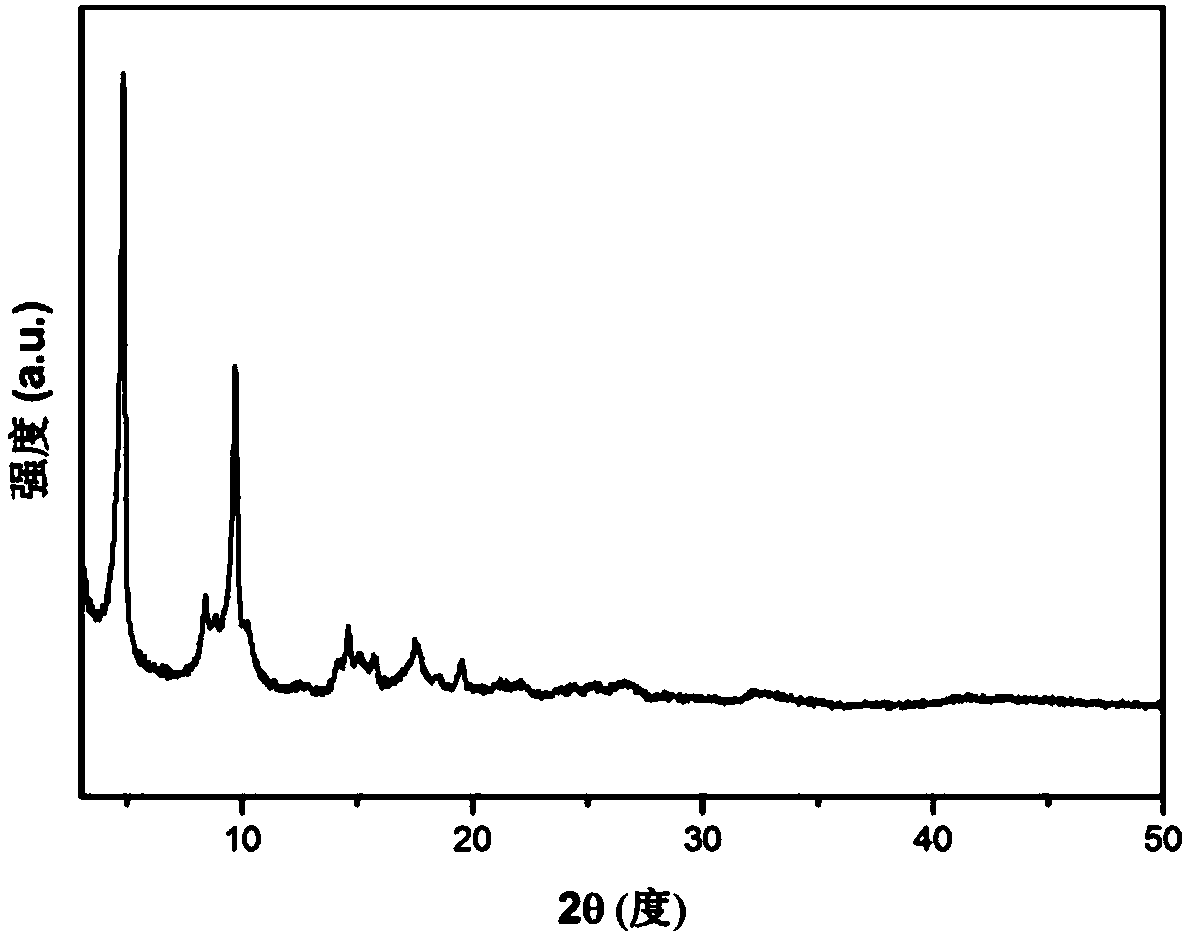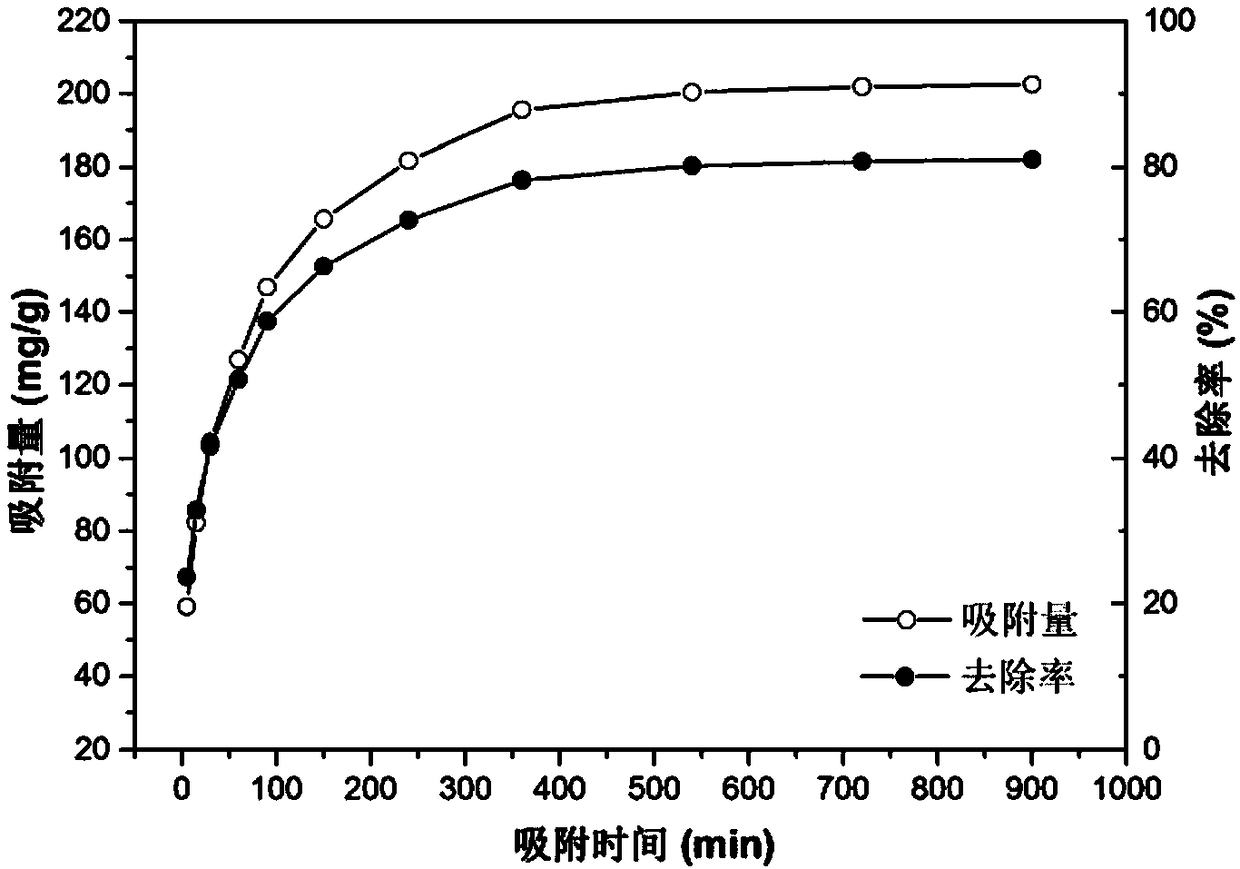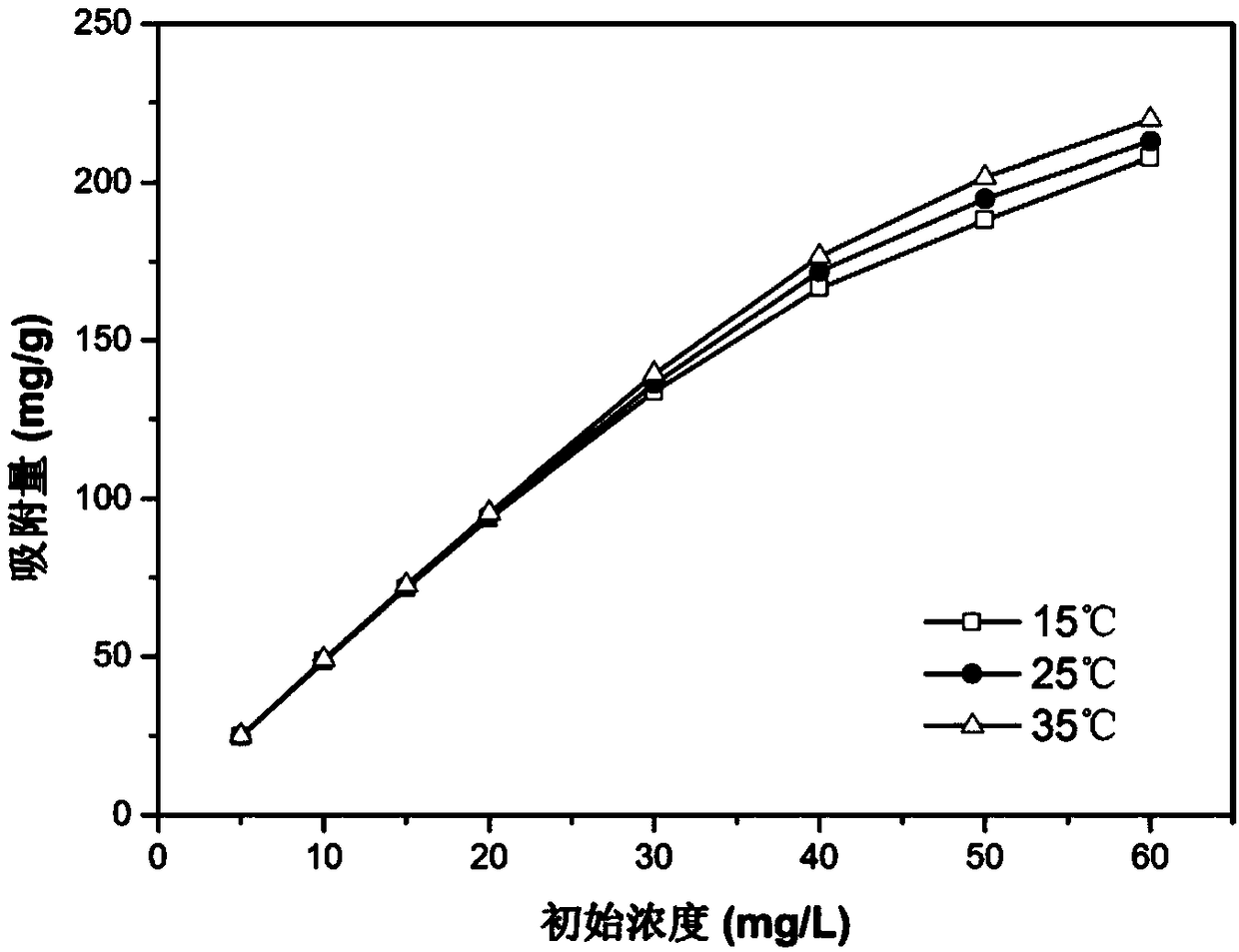Method for removing tetracycline by using aluminum-based metal organic framework/graphene oxide composite material
An organic framework and composite material technology, applied in the field of environmental science and engineering, can solve the problems of toxicological effects, selective inhibition, ecological environment and human health hazards, and low adsorption efficiency, achieving good water stability and low cost. The effect of low cost and simple preparation process
- Summary
- Abstract
- Description
- Claims
- Application Information
AI Technical Summary
Problems solved by technology
Method used
Image
Examples
Embodiment 1
[0035] Embodiment 1: prepare MIL-68 (Al) / GO material
[0036] Dissolve 3.00g of aluminum chloride and 3.00g of terephthalic acid in 150mL of N,N-dimethylamide, stir well to dissolve completely, then slowly add 0.12g of graphene oxide powder, and mix evenly; 130°C The reaction was stirred at constant temperature for 16 hours, and then naturally cooled to room temperature. The filtered product was washed 2-3 times with N,N-dimethylamide and 2-3 times with methanol, then dried and activated under vacuum at 105°C for 12 hours, and labeled as MIL-68(Al) / GO.
[0037] The MIL-68(Al) / GO material prepared in Example 1 of the present invention was characterized by using the Empyrean X-ray diffractometer produced by Panalytical in the Netherlands, wherein the operating conditions were: copper target, 40KV, 40mA, step size 0.02626 The scanning speed is 8.109 seconds / step. The result is as figure 1 shown, from figure 1It can be seen that the XRD diffraction peaks of the MIL-68(Al) / GO m...
Embodiment 2
[0044] Example 2: Adsorption of tetracycline in water by MIL-68(Al) / GO
[0045] Take ten 250mL Erlenmeyer flasks, and add 100mL of 50mg / L tetracycline aqueous solution to each Erlenmeyer flask. Each group of Erlenmeyer flasks was added with the MIL-68(Al) / GO material prepared in Example 1, and the amount of the material added in each Erlenmeyer flask was 20 mg. At 298K temperature and 150 rpm, the adsorption experiment was carried out in a constant temperature shaker, and the concentration of the solution was measured by regular sampling for analysis. The curves of adsorption capacity and removal rate at different adsorption times are shown in figure 2 shown, from figure 2 It can be seen that the adsorption rate of MIL-68(Al) / GO to tetracycline in water is very fast in the first 90 minutes, and can reach adsorption equilibrium in about 300 minutes. For the tetracycline solution with an initial concentration of 50 mg / L, the maximum adsorption capacity can reach 202.65 mg / g,...
Embodiment 3
[0046] Example 3: Adsorption of tetracycline in water by MIL-68(Al) / GO
[0047] Take 21 250mL Erlenmeyer flasks and divide them into three groups. The concentration gradient of tetracycline aqueous solution in each group is 5, 10, 15, 20, 30, 40, 60mg / L, and the volume is 100mL. The MIL-68(Al) / GO material prepared in Example 1 was added to each Erlenmeyer flask in an amount of 20 mg. The three groups were adsorbed at 288K, 298K and 308K, in a constant temperature shaker at 150 rev / min, and the adsorption time was 6 hours. The adsorption amounts at different adsorption temperatures and initial concentrations were as follows: image 3 shown, from image 3 It can be seen that when the initial concentration of tetracycline is less than 20 mg / L, the temperature has almost no effect on the adsorption capacity; when the initial concentration of tetracycline is greater than 20 mg / L, the influence of temperature on the adsorption capacity begins to appear, and as the temperature incre...
PUM
| Property | Measurement | Unit |
|---|---|---|
| specific surface area | aaaaa | aaaaa |
| specific surface area | aaaaa | aaaaa |
| adsorption capacity | aaaaa | aaaaa |
Abstract
Description
Claims
Application Information
 Login to View More
Login to View More - R&D
- Intellectual Property
- Life Sciences
- Materials
- Tech Scout
- Unparalleled Data Quality
- Higher Quality Content
- 60% Fewer Hallucinations
Browse by: Latest US Patents, China's latest patents, Technical Efficacy Thesaurus, Application Domain, Technology Topic, Popular Technical Reports.
© 2025 PatSnap. All rights reserved.Legal|Privacy policy|Modern Slavery Act Transparency Statement|Sitemap|About US| Contact US: help@patsnap.com



